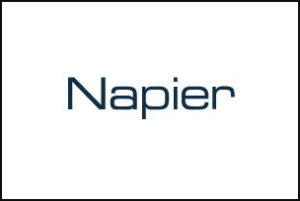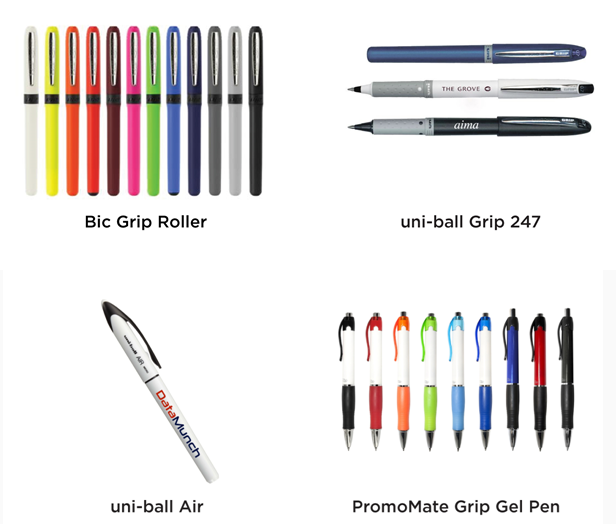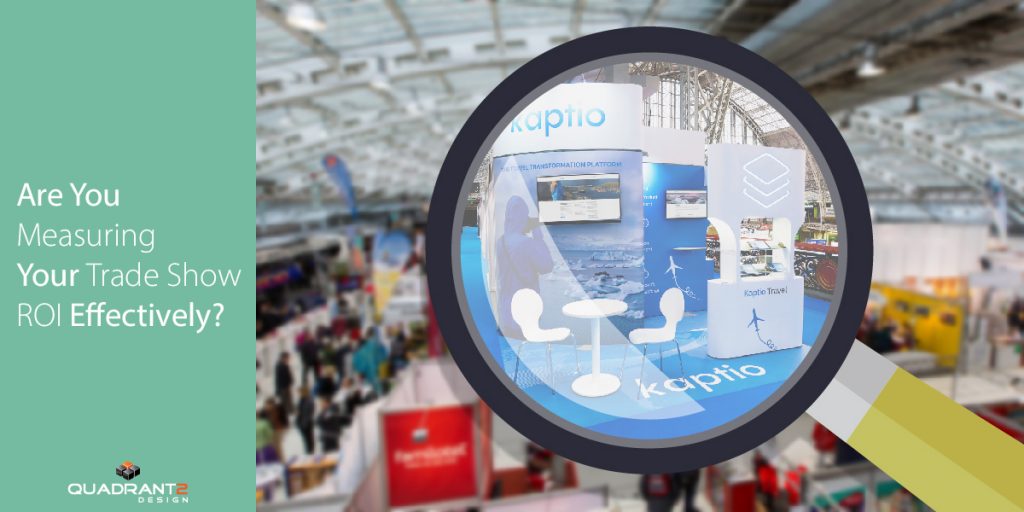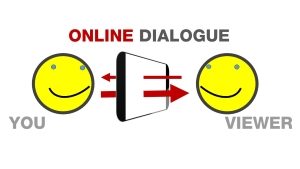This is how we roll
Have you started to think about the autumn and all the work you will be doing engaging your contacts and bringing in new business? Perhaps you are exhibiting or getting out and about on visits?
Either way, if you are taking a pen to leave behind or for your own use make sure it is a good writer and will be appreciated by the recipient and used until they pass it on or the ink finally runs out.
Here at EMC, we love rollerball pens and particulary gel pens which have a smooth writing experience and leave a strong imprint. Below are a selection of 4 of the best including the bestselling Bic Grip Roller now available in 12 colours.
We hope you like them as much as we do!
Are you Measuring your Exhibition ROI Effectively?
Your exhibition attendance took months to organise and execute, but do you really know if it was worth the investment? Notoriously something that can be often overlooked, understanding the ROI of your exhibition is crucial for your next year’s forecast and budget. Exhibition stand specialist, Quadrant2Design, outline how to effectively measure your ROI at your next trade show.
If you’re not a “math whizz”, the idea of potentially muddling through screens of data can be daunting. But, fear not, with a clear strategy optimised to unearth the numbers and findings that matter, finding out the ROI of your trade show needn’t be a headache.
Outlining your objectives/goals
“The best preparation for tomorrow is doing your best today.” – H. Jackson Brown, Jr.
Before we can dive into how we’ll seek to measure the success of your exhibit, you need to be 100% clear of your objectives and goals. There’s no point in succumbing to, “just getting your name out there” before the event, and then looking to pull a comprehensive report once the show closes.
Understand the needs of your business related to the exhibition, and structure your responses around the below:
- Where in the business did the directive to attend the event come from? Is it just “something that you’ve always done”?
- Are you looking to promote a specific product or service?
- Who is your audience at the exhibition?
- What are the expectations internally from attending?
- Are your competitors attending? What are they likely to be seeking to achieve?
- What is the #1 reason to attend? Increase leads, brand awareness, retain current clients, etc.
Once you’ve outlined why you’re attending, you can start to understand which metrics and results you’ll want to monitor.
Choose the right exhibition
“A place is only as good as the people in it.” ― Pittacus Lore
Once you’ve outlined what you’re looking to achieve in your next outing, it’s wise to reflect on if the exhibition meets the criteria. Remember the audience of direct to consumer exhibitions will greatly differ from those attending a trade-show.
Ensure that you’ve taken into consideration who else is attending – is it for your industry or your target audience? Be sure to take the opportunity to study and interact with other vendors at the exhibition, too. Trade shows are a great time to dive into your industry and take learnings to enhance your own product or service.
Consider the bigger picture
“All the statistics in the world can’t measure the warmth of a smile.” ― Chris Hart
Measuring ROI for your exhibition doesn’t have to be, nor should it be a whirlwind of data. Once
you’ve outlined what you’re looking to achieve, the success KPIs will follow. Depending on what your ultimate aim is for the entirety of the show, you may consider the below:
Attendee satisfaction – To pack a punch at your exhibition, you’ll need an exhibit that stands out in a hall of companies vying for attendee footfall. Once your visitors are on your stand, you’ll want to know what they’re thinking and feeling! And, where are people most likely to sound-off their inner-most thoughts? Social media!
Be sure to leverage your social media by curating polls and inviting comments from your community at-large on your exhibit.
Media and press coverage – If you’re launching a new product/service at the show, you’ll want to collate any press coverage. These clippings provide scope for the sentiment of your reveal and how the industry reacted.
Sales and/or pre-orders – This is a usual suspect on event ROI, but important none the less. If you’re looking to directly sell, be sure to fully capture details of sales. You can also compare this data to historic figures to gauge the success of your exhibit and to suss out which shows are more beneficial to your business than others.
Website traffic – This is a metric that is often overlooked when physically attending events, but something to keep on your radar. By creating an engaging stand, you may be leaving more of an impression than you think. Perhaps your exhibit caught someone’s eye and they then search for your website and browse. Be sure to dip into:
- Unique visitors – How many new eyes?
- Average vs new sessions – Compare it to previous tangible data.
- Bounce rate – are they further discovering your website?
- Devices – Are they viewing from a mobile? Perhaps inside an exhibition hall… hmmm!
Collecting data – If you’re collecting names, mobile numbers and email addresses to add to your subscriber list, be sure to check-in on how many people unsubscribed upon becoming a subscriber, your open and read rates and how many converted to sales.
Social media – Its own beast! As well as dipping into various other areas of your report, social media can be used effectively in other ways. It’s always in our pocket, and just because the day is bound to busy, it won’t stop attendees tweeting or snapchatting their journey.
Likes, comments and shares are all indicative of the success of your posting, so be sure to showcase engaging elements of your trade show exhibit to your customers. You’ll want to tell them where in the hall you are, and provide visual stimulus for them to react to.
If you’re measuring eyeballs on stand, consider hosting a competition on your Twitter/Facebook to draw the crowds in, “show this tweet at our stand to win X”. It could be something as simple as a bottle of water or sweets. You’ll want something to entice busy show go-ers to your stand, and an easy metric to track the success of.
Think creatively
“You know how creative people are; we have to try everything until we find our niche.” ― E.A. Bucchianeri
Do be sure to also think outside “usual” metrics, for example, if your attendance at an event has the aim to get your products into as many hands as possible, you may choose to measure how many demonstrations you held. Likewise, if you’re looking to collect data for online marketing campaigns to further educate around your products and services, you may host a competition on the stand that prompts visitors for their contact details and then measure part of your success on completed applications.
Arm your stand staff with simple questions to ask your visitors when talking through services and products. “How did you find us?” will give you solid indications of which of your marketing efforts are making an impact.
Treat your exhibition as you would any other marketing activity, whether it’s a sponsored campaign, advertising or social media. They all have goals and metrics to measure the outcomes and all these findings ultimately decide on the worth of the activity and what is next for that channel.
The Quadrant2Design team design and build exhibition stands exclusively using the Swiss-designed Prestige Events System. Their Freedom2Exhibit® plan increases operational flexibility and minimises cost of exhibiting. For your free design proposal drop them an email at [email protected] or call them on 01202 723500 for more information.
Part 22 – How useful would a Corporate Video be for your business?
How about having your own Corporate Video on your website? A real blockbuster that makes you stand out from the competition, shows you as the authority you are and generates clients queuing for your service?
No? Too expensive?
What about a corporate STYLE video, instead?
Cool?
Let me tell you why this is a really bad idea.
What Do Corporate Videos Look Like?
Corporate Videos generally they look like they are made to a serious budget, primarily, because they are, and they tend to cover topics like:
- Company history;
- Company philosophy, processes or technologies that set them apart;
- Corporate mission statements;
- Company milestones like corporate anniversary, new President, new CEO, new building; new technology.
Typically, you’ll find that videos like these are done by interviewing the company president, CEO or other top C –level officers.
In brief, they’re all about promoting the company.
Now, would such a corporate video be right for your business, service, project or company?
For starters, given the budget involved, probably not.
How about a video made in the STYLE of a corporate video?
Corporate STYLE Videos
Let me show you why I had clients come to me who hated their corporate style video.
You see, in a corporate video you are usually in front of the camera, but not facing your viewers.
You are facing and talking to the interviewer, which means you have turned away from your viewers.
And the interviewer talks to you while the viewer now becomes a separate third party. Your viewer no longer engages with you directly.
In a typical corporate STYLE video, though, the interviewer disappears.
This means that you are left talking into an empty corner.
And the interview becomes a fake interview.
The Fake Interview
As a consequence, the content of these corporate style videos becomes self-aggrandizing. It is now all about me, my company, my service, my clients.
This is the wrong content for a video that is supposed to engage, connect and build trust.
This, of course, is a huge mistake, and to rescue the situation, video producers get creative:
They zoom in.
They add some artistic black and white moments.
They focus on your hands.
These are all artefacts that distract visually.
But these are only short term measures.
Because, meanwhile, you are still talking to the wall, the viewer gets bored and clicks away.
Let’s get back to basics for a moment:
What is the best way to engage another person?
Having a dialogue where you talk face to face.
Now let us transfer this to your website and have an online dialogue.
Sure, online you are less interactive.
But you still pick a topic that interests your viewers and answers their question.
It is, therefore, still a dialogue because, as, for instance, in the video above I am talking directly to my viewers about a specific question: “What about having your own corporate video on your website?”
 The main difference is that now, it is not a continuous to and fro anymore but restricted to me answering various aspects of a single question.
The main difference is that now, it is not a continuous to and fro anymore but restricted to me answering various aspects of a single question.
But what happens when you use a typical corporate style video, instead?
As we have seen, you are talking to the wall mostly about nothing of interest to the viewer. The viewer is now a disengaged bystander.
The video is no longer a dialogue, but a monologue masquerading as a FAKE interview that is generally about nothing of interest.
And what do we do when we get bored online?
Yes, we all click away.
What can you do about it?
Create affordable alternatives to the corporate style video that will help you achieve your online goals.
What could these alternatives look like?
One option is to create something that is modelled on my series of ‘A-Z of Video for Professional Services.’
This is at the core of my A-Z of Video for Professional Services:
Providing you with the information that empowers you to connect and build trust with your online audience; that helps you get your message right and get it out there with the most powerful online tools available; that helps you come across as a Trusted Advisor on your website and on your social media properties.
You can see all of my the A-Z of Video for Professional Services on my blog.
This article was first published on the VideoMagnets.co.uk blog.
Part 21 – What is the cost of a video?
Cost is probably THE first item on your mind when you think about having a video done for your website.
Don’t worry, you are not alone. It usually is THE first question people keep asking me.
Well, my answer is as you might expect, IT DEPENDS.
- Do you have a budget?
- What type of video do you want?
- What do you want to achieve with video?
Yup, I start with the money question right out of the starting blocks. Let me show you why this is so important.
At a consultation a couple of years ago, a client answered only the first 2 questions.
The type of video they wanted was a 5-minute, really complex hand-drawn doodle video like the those created for The RSA.
This type of video has a budget in the region of at least $15K to $20K. Yes, fifteen to twenty thousand dollars.
My prospect’s budget was £200.
Now, even if their budget had miraculously grown by 1,000 percent and the production cost of the type of video they wanted could have been magicked down by half, their wishes could still not have been satisfied.
That is why I have my third question:
What do you want to achieve with your video?
Followed by:
How much is a video worth to you?
Here, more often than people simply give up. They have no idea.
But that’s OK because this takes us straight to the core of our topic:
- What do you want your video to achieve?
- How much is achieving this goal worth to you?
- How much are you willing to invest to achieve this goal?
You see, there is a persistent myth that ‘video is expensive’. But this only true if we look at video as an EXPENSE and not as an INVESTMENT.
Let me put this in money terms with two real life examples (and, yes, I am keeping them fully anonymised):
Let’s say you hit it lucky and you get a video done really cheaply, say for £100.
Your video is on YouTube, and it gets views.
After a while you check your stats.
Your video had some views right out of the gate but you discovered that most viewers clicked away half way through the video. What is important to note is that this video is 2 minutes long, the only contact information is at the end and lasts only a few seconds.
Then the number of viewers begins to dwindle rapidly.
Result: You did not get any business from your video.
After all, it only cost £100.
In my view, this video was expensive.
Why?
Because it didn’t do anything for your business, it is as if you had flushed the £100 straight down the toilet.
Here is another example:
You get 20 videos done for your website.
Then you discover that these videos tripled your conversion rate.
Would a price tag of £50,000 for these videos be expensive or a good investment?
Let’s do the sums:
Six months later, you discover that because of the increase in conversion rate, the value of these videos to your business was £750,000 a year.
You paid £50,000 and added £750,000, which is a Return On Investment of 15 to 1.
This is insanely profitable, which, in my book, makes the £50,000 look really cheap.
That’s funny, isn’t it: £100 is expensive and £50,000 is cheap.
As I said, these are real life examples. A major liberty I have taken was that, in the second case, they actually paid way less than £50,000 for their videos. Now run the figures.
Now you know what ‘it depends’ on when you want to calculate the cost of a video.
Don’t worry, I won’t let you go without any some specific price information.
Here are some average video prices drawn from the largest video market in the world:
On average, the cost of a 1-to-2-minute-long video is approximately $1,000 per minute.
However, this is only an average figure. Here is what this average depends on:
In the first instance, videos can be FREE – if you create your own videos.
The danger here is that your videos can look amateurish and that the lack of professional finish can damage your brand, image and credibility.
Semi-Professional videos that are 1-to-2-minutes long vary from $1,500 to $3,000.
At this level, there can still be problems with variable quality, and the content is not always guaranteed to hit the marketing sweet spot.
Animated 1-to-2-minute-long videos start at about $3,000. My reservations here are the same as those for the next price category.
Professionally developed, created and produced videos that are 1-to-2-minutes long cost from $5,000 to $20,000 and, of course, way beyond.
There should be no problems with production quality while the content is likely to be a corporate video.
These videos absolutely have their place, just like animated videos have their place, but the important question I would ask myself is in both cases: Is this the type of video I really want? Will this type of video be optimal for my business? This particularly important for professional services businesses.
These are, of course, generalised average prices. One important aspect they ignore is the benefits generated by economies of scale that arise when a whole series of videos is created all at once. If you want to know more about the benefits of these economies of scale, just get in touch.
So, there you have the cost of video. There is only one question that still needs to be answered:
What do you want to achieve with video?
My aim is to empower by helping you to get it right: create, present and distribute effective videos. Providing you with the information that empowers you to connect and build trust with your online audience; that helps you get your message right and get it out there with the most powerful online tools available; that helps you come across as a Trusted Advisor on your website and on your social media properties You can see all of my the A-Z of Video for Professional Services on my blog.
This article was first published on the VideoMagnets.co.uk blog.
How to Plan a Marketing Automation Strategy for Success
 Marketing Automation. Two words that are currently heard by anyone and everywhere in the marketing world. As Marketing Automation has gained momentum, marketers are quickly looking for the best and easiest way to pull off a successful Marketing Automation strategy.
Marketing Automation. Two words that are currently heard by anyone and everywhere in the marketing world. As Marketing Automation has gained momentum, marketers are quickly looking for the best and easiest way to pull off a successful Marketing Automation strategy.
As marketers are faced with so much choice and information, the key question on every marketer’s mind, is how do you deploy a successful Marketing Automation strategy?
We’ve broken down 6 key steps to help you plan a Marketing Automation strategy for Success:
- Define your Goal
Understanding what you want to achieve from your Marketing Automation strategy is the number one step that leads to success. Defining your goal is essential to understanding what you want to accomplish, and how to do this. To use Marketing Automation effectively, you need to know what elements of the platform to focus upon, and how this will efficiently help you achieve your goal.
- Create Personas and Understand your Buyer’s Journey
The key element to success is understanding who your buyer is and how you are going to address their buyer journey. Personas are an important and extremely effective Marketing Automation tactic, as they allow you to focus in on your target audience and define who they are. For example, are they always looking to try a new thing? A fan of technology, or against change? By creating and knowing your personas, you will be able to use Marketing Automation more effectively to help them through the buyer journey.
By defining a persona to target, you are now more aware of what their potential pain points are, and can more accurately define the help they need. Important parts of the buyer’s journey, such as how many items of content will you need and how and when will they be delivered; can be defined by specific personas, allowing you the opportunity for greater success.
But personas are not enough. You must also ensure you truly understand your buyer’s problems and the perfect solution to them. Throughout the buyer’s journey, your target audience is looking for a specific solution, and with the help of Marketing Automation it is up to you to provide them with the perfect answer to their problem.
- Provide the Right Content at the Right Time
Content is essential to your Marketing Automation strategy as it provides the opportunity to deliver the information your buyer will be looking for. However, it is important to recognise that different content will be needed for each stage of the buyer journey. For example, top of the funnel content includes blogs, online ads, video marketing and social media. Ideal content for the Awareness stage. Yet when the buyer reaches the decision stage they need bottom of the funnel content that will make them commit to the product. This could include case studies, an offer of a free trial, and a free audit or assessment.
It is crucial to have the right content in place before you deploy your Marketing Automation strategy. Without planning ahead and having the content written, your Marketing Automation campaign will have gaps, affecting your success.
- Amplify your Reach
Marketing Automation if used right, is a great tool to ensure you are contacting everyone you are targeting. It is important to expand your reach as far as possible through blog posts, social media – including LinkedIn and Twitter updates, and even press releases. The more platforms you use, results in a greater number of people seeing your content, creating bigger and more opportunities to contact and form relationships with potential prospects.
- Start Off Small
It is important to not try and automate 100% of your marketing process straight away. Marketing Automation can be daunting and you will want to get comfortable with all its features over time. A quick way to get up to speed is to work with an agency who can provide the Marketing Automation support you really need and help you introduce the right platform capabilities within your company.
Your Marketing Automation platform is equally as important as it is what brings your strategy together. Each platform has its unique capabilities and although there is no ‘right’ one, research and even potentially tests should take place to help decide what one is best for your company.
- Test and Refine
A Marketing Automation strategy can always be improved. Regularly check if you are achieving your defined goals, or if you can be more ambitious because it was so successful. Update your buyer persona if they turned out a bit different than you thought, and review what content pieces were the most successful and if they weren’t, why?
Refining your Marketing Automation strategy will continue to add to your success, as by continually improving your strategy you are maintaining positive results from your use of Marketing Automation.











